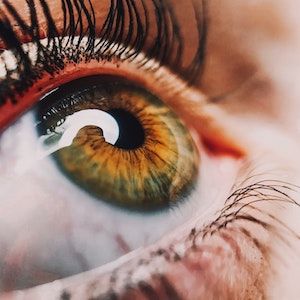Article
AI-Based Fundus Screening System Could Aid in Early Detection of Ocular Diseases
Author(s):
An AI-based fundus screening system used in a real-world setting was able to distinguish between normal and abnormal ocular fundus and diagnose 5 prevalent ocular conditions.
Credit: Unsplash/Perchek Industrie

The real-world application of an artificial intelligence (AI)-based fundus screening system indicated its ability to detect 5 prevalent ocular conditions, with particularly favorable efficacy for diabetic retinopathy (DR), retinal vein occlusion (RVO), and pathological myopia, according to new research.1
An investigative team from Sun Yat-sen University suggested the sensitivity, specificity, accuracy, positive predictive value (PPV) and negative predictive value (NPV) of the 3 fundus abnormalities were greater (>80%) than those for age-related macular degeneration (AMD), referable glaucoma, and other abnormalities.
“The epidemiologic data from the ophthalmic clinic reveal that certain patients with optic atrophy are young and lack ophthalmic or systemic disorders, which likely indicates an epidemiologic trait in the local area and requires further study to determine the cause,” wrote the investigative team.1
The team, led by Xuanwei Liang and Rongxin Chen, Zhongshan Ophthalmic Center, indicated the potential clinical application of AI screening systems in ocular imaging, due to their ease of use, limited need for resources, and appropriateness for use in primary regions. Literature suggests AI may become a future trend in ocular fundus abnormality screening and assist in diagnosing patients earlier and providing them with treatment options.2 Liang and colleagues used their AI screening system to help classify 7 conditions, including 5 common ocular fundus abnormalities, to evaluate the application and efficacy of the system as well as its application in primary population screening.
Investigators collected 637 color fundus images of 327 patients from an ophthalmic clinic to evaluate the clinical application of AI. A total of 20,355 color fundus images of 10,437 individuals from a physical examination center were then included to evaluate the screening of the general population. Only one image from each examined eye were used in the analysis.
When eligible color fundus images were inputted into the AI software, the system could output conditions including normal, age-related macular degeneration (AMD), DR, RVO, referable glaucoma, pathological myopia, and other abnormalities. The gold standard referral for every condition was evaluated by 2 ophthalmic chief clinicians with ≥20 years of experience. For clinical application examination, the indicators included validity, precision, and the application effect, measured by the positive predictive value (PPV) and negative predictive value (NPV).
A total of 158 males (48.32%) and 169 females (51.68%) were included in the clinical environment analysis, with an average age of 48.18 years. For the population screening, the analysis included 5481 males (52.52%) and 4956 females (47.48%), with an average age of 46.31 years.
Data showed the diagnostic results of AI included 436 normal eyes, 29 eyes with AMD, 16 with DR, 17 with RVO, 74 with referable glaucoma, 48 with pathological myopia, and 17 with other abnormalities. Meanwhile, the gold standard diagnostic results showed 391 normal eyes, 14 with AMD, 17 with DR, 14 with RVO, 55 with referable glaucoma, 44 with pathological myopia, and 102 with other abnormalities.
On the other hand, the diagnostic results of AI population screening included 15,779 normal eyes, 653 with AMD, 713 with DR, 248 with RVO, 2146 with referable glaucoma, 350 with pathological myopia, and 466 with other abnormalities. Investigators then compared the percentages of different diagnostic conditions in the 2 application environments.
Regarding the validity of the AI, the analysis found RVO had the highest sensitivity, and lowest false negative rate and negative likelihood ratio, while DR had the highest positive likelihood ratio. In terms of precision, RVO showed the highest accuracy and the strongest Kappa value. For application effect, investigators found RVO had the highest NPV, while other abnormalities had the highest PPV.
Liang and colleagues noted that the percentages of different conditions were similar in the clinical application environment and population screening for AMD, DR, RVO, and referable glaucoma. On the other hand, the percentages of pathological myopia and other abnormalities in population screening were only slightly less than those in the ophthalmic clinic.
“These results all demonstrated the beneficial effect of our AI-based fundus system for fundus screening and epidemiological research,” investigators wrote.1 “Because there were more healthy people in the physical examination center than in the ophthalmic clinic, the percentage of normal in the population screening was higher than that in the clinical environment.”
References
- Cao S, Zhang R, Jiang A, et al. Application effect of an artificial intelligence-based fundus screening system: evaluation in a clinical setting and population screening. Biomed Eng Online. 2023;22(1):38. Published 2023 Apr 24. doi:10.1186/s12938-023-01097-9
- Saleh GA, Batouty NM, Haggag S, et al. The Role of Medical Image Modalities and AI in the Early Detection, Diagnosis and Grading of Retinal Diseases: A Survey. Bioengineering (Basel). 2022;9(8):366. Published 2022 Aug 4. doi:10.3390/bioengineering9080366





